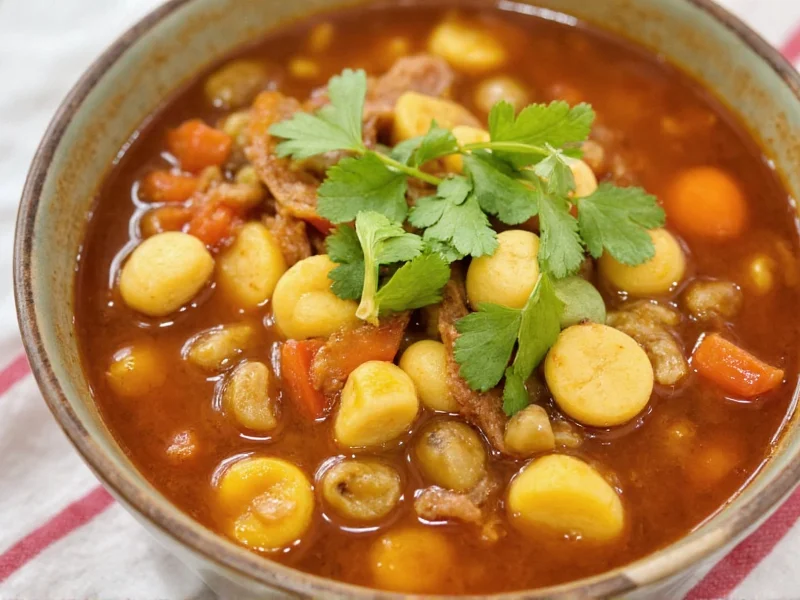Soup cans represent one of the most significant innovations in food preservation technology. These cylindrical metal containers transformed how we store, transport, and consume prepared foods, making nutritious meals accessible year-round regardless of season or location. Understanding soup can composition reveals why this packaging method has endured for nearly two centuries despite evolving food technology.
Historical Development of Canned Soup
The story of soup cans begins with Nicolas Appert's 1809 food preservation method using glass jars, which Napoleon commissioned to feed his troops. Peter Durand received the first patent for tin-plated iron containers in 1810, creating the foundation for modern canning. However, canned soup specifically didn't become commercially viable until Joseph A. Campbell and Abram Anderson developed a viable process in 1869. Their company, Campbell Soup Company, introduced condensed soup in 1897, which dramatically reduced shipping costs and made canned soup affordable for average households.
Early soup cans required a hammer and chisel to open until the 1930s when easy-open lids were developed. The pull-tab lid emerged in the 1950s, and today's stay-on-tab lids became standard in the 1980s. Each innovation addressed consumer demands for convenience while maintaining the critical airtight seal necessary for food safety.
Modern Soup Can Composition and Manufacturing
Today's soup cans follow a precise engineering process that balances protection, preservation, and practicality. The standard construction involves multiple layers working together:
| Layer | Material | Function |
|---|---|---|
| Outer layer | Printed steel or aluminum | Branding, protection from external elements |
| Middle layer | Tin-plated steel (98%) or aluminum (2%) | Structural integrity, barrier against oxygen and moisture |
| Inner lining | Epoxy resin (BPA-based or BPA-free) | Prevents metal corrosion and chemical reactions with acidic foods |
The manufacturing process begins with large metal sheets cut into precise shapes. These sheets form cylinders with one end attached, then receive the protective interior coating. After filling with soup at 194-212°F (90-100°C), the open end receives its lid and undergoes double-seaming—a critical process where the lid and can body interlock with seven tight folds creating an airtight seal. Finally, the sealed cans undergo thermal processing to eliminate pathogens and achieve commercial sterility.
Food Safety and Material Concerns
Food safety remains paramount in soup can design. The interior lining prevents metal migration into the food while maintaining the soup's flavor and nutritional content. Concerns about bisphenol A (BPA) in can linings prompted significant industry changes. Since 2012, most major soup manufacturers have transitioned to BPA-free alternatives like polyester or oleoresin coatings, particularly for acidic soups like tomato varieties.
Modern quality control involves multiple verification steps:
- Seam inspection using specialized cameras to detect microscopic defects
- Pressure testing to ensure integrity during thermal processing
- Random sampling for chemical migration testing
- Shelf-life studies tracking nutritional content and flavor stability
Properly manufactured soup cans maintain food safety for 2-5 years when stored in cool, dry conditions. The can itself provides superior protection against light, oxygen, and moisture compared to alternative packaging.
Environmental Impact and Recycling Process
Soup cans represent one of the most efficiently recycled packaging formats. Steel soup cans are 100% recyclable indefinitely without quality loss, with a current recycling rate of approximately 71% in North America. The recycling process transforms used cans into new containers within 60 days on average.
When properly recycled, the journey looks like this:
- Collection: Soup cans enter municipal recycling streams
- Sorting: Magnets separate steel cans from aluminum and other materials
- Shredding: Cans are reduced to small pieces for melting
- De-coating: Heat removes labels and organic residues
- Remelting: Metal is purified at 1,600°C (2,912°F)
- Rolling: Molten metal forms new sheets for can production
Despite high recyclability, contamination remains problematic. Food residue inside uncleaned cans can compromise entire recycling batches. Consumers maximize recycling effectiveness by rinsing cans before disposal. Aluminum soup cans (less common than steel) require different recycling processes but offer even greater energy savings when recycled.
Cultural Significance of Soup Cans
Beyond their functional purpose, soup cans achieved iconic status through Andy Warhol's 1962 Campbell's Soup Cans artwork. This series of 32 paintings transformed a mundane grocery item into a symbol of American consumer culture and pop art. Warhol's choice of subject challenged traditional notions of fine art by elevating everyday commercial objects to gallery status.
The cultural resonance of soup cans extends to:
- Depictions in films like Toy Story where a can of tomato soup appears
- Use in survival scenarios representing basic sustenance
- Symbolism in literature representing industrialization and mass production
- Collectible vintage cans from early 20th century manufacturers
This cultural dimension demonstrates how a simple food container can transcend its utilitarian function to become embedded in collective consciousness.
Creative Repurposing of Empty Soup Cans
Before recycling, empty soup cans offer numerous practical second lives. Creative repurposing reduces waste while providing functional household items. Successful projects maintain the can's structural integrity while addressing safety considerations:
- Organizers: Remove sharp edges with sandpaper and use for pens, kitchen utensils, or craft supplies
- Planters: Drill drainage holes and paint for small herb gardens
- Candles: Fill with melted wax and a wick (remove labels completely to prevent fire hazard)
- Emergency stoves: Used in survival situations with proper ventilation awareness
When repurposing soup cans, always remove labels completely and smooth any sharp edges. Never use cans that previously contained acidic foods for food-related repurposing due to potential metal leaching. The cylindrical shape and durability make soup cans particularly versatile for DIY projects compared to other food containers.











 浙公网安备
33010002000092号
浙公网安备
33010002000092号 浙B2-20120091-4
浙B2-20120091-4